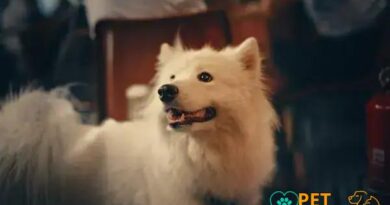What is New techniques for training
Understanding New Techniques for Training
New techniques for training dogs have emerged as innovative methods that enhance the learning experience for both the pet and the owner. These techniques focus on positive reinforcement, which encourages desired behaviors through rewards rather than punishment. This approach not only fosters a stronger bond between the dog and the owner but also promotes a more enjoyable training environment.
Positive Reinforcement: A Game Changer
Positive reinforcement is at the core of many new training techniques. This method involves rewarding your dog with treats, praise, or playtime whenever they exhibit a desired behavior. Over time, this encourages the dog to repeat the behavior, making training sessions more effective and enjoyable. The shift from traditional punishment-based methods to positive reinforcement has revolutionized dog training, making it more humane and effective.
Clicker Training: Precision and Timing
Clicker training is another innovative technique that has gained popularity among dog trainers. This method uses a small device that makes a clicking sound to mark the exact moment a dog performs the desired behavior. The click is followed by a reward, which helps the dog associate the sound with positive outcomes. This technique enhances communication between the dog and the trainer, leading to quicker learning and better retention of commands.
Behavioral Shaping: Gradual Learning
Behavioral shaping is a technique that involves breaking down complex behaviors into smaller, manageable steps. Trainers reward the dog for each step they successfully complete, gradually guiding them toward the final behavior. This method is particularly useful for teaching intricate tricks or commands, as it allows the dog to learn at their own pace while still receiving positive reinforcement throughout the process.
Socialization Techniques: Building Confidence
New training techniques also emphasize the importance of socialization. Exposing dogs to various environments, people, and other animals helps them develop confidence and reduces anxiety. Socialization techniques often involve controlled interactions and positive experiences, which can significantly improve a dog’s behavior in different situations. This approach is essential for preventing behavioral issues that may arise from fear or uncertainty.
Remote Training Collars: Training from a Distance
Remote training collars have become a popular tool for dog trainers looking to reinforce commands from a distance. These collars allow owners to deliver a gentle stimulation or sound to their dog when they stray from desired behaviors. When used correctly, remote collars can enhance training sessions by providing immediate feedback, helping dogs learn commands more effectively, especially in distracting environments.
Virtual Training: The Future of Dog Training
With advancements in technology, virtual training has emerged as a viable option for dog owners. Online courses and video tutorials offer flexibility and accessibility, allowing owners to train their dogs at their own pace. Virtual training often incorporates new techniques and methods, providing a wealth of resources for owners to utilize in their training journey. This approach is particularly beneficial for those who may not have access to local trainers.
Mindfulness in Training: A Holistic Approach
Mindfulness has made its way into dog training, focusing on the mental and emotional well-being of both the dog and the owner. This technique encourages trainers to be present during training sessions, fostering a calm and positive atmosphere. By practicing mindfulness, owners can better understand their dog’s needs and behaviors, leading to more effective training outcomes and a deeper bond.
Incorporating Play into Training
Integrating play into training sessions is another new technique that has proven to be effective. By making training fun and engaging, dogs are more likely to participate and learn. This method can involve using toys, games, or interactive activities that reinforce commands while keeping the dog entertained. The playful approach not only enhances learning but also strengthens the relationship between the dog and the owner.
Continuous Learning: Staying Updated
As the field of dog training evolves, it is essential for owners and trainers to stay informed about new techniques and methods. Continuous learning through workshops, seminars, and online resources can help trainers refine their skills and adopt the latest practices. By embracing new techniques for training, dog owners can ensure they are providing the best possible education for their furry companions.




